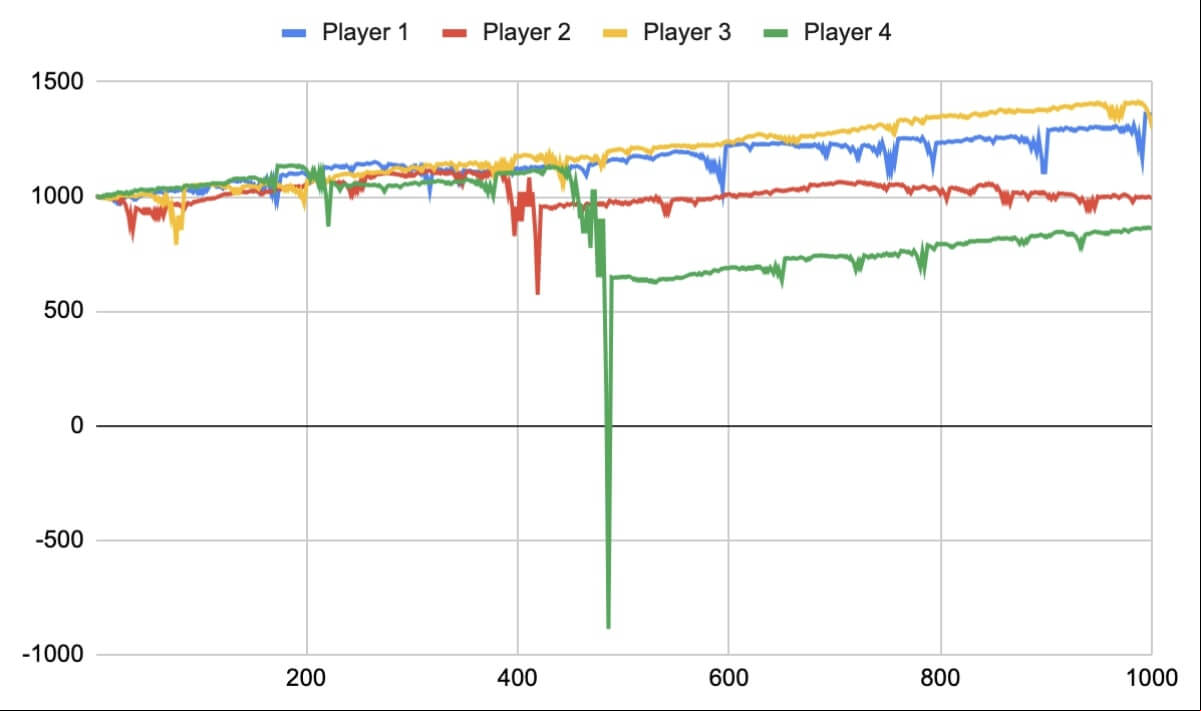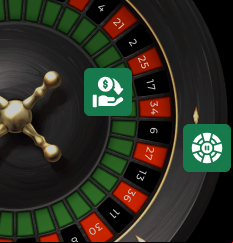How the Piquemouche Strategy Works
This system is used on outside even money bets red/black, odd/even and low/high. You start with the lowest AU$1 wager and you adjust it following the steps below:
- Start with a AU$1 bet and after you lose 3 times in a row double the bet.
- On any win the bet size remains the same.
- Every 3 losses doubles your get size. The progression with a AU$1 starting bet is 1, 1, 1, 2, 2, 2, 4, 4, 4, 8, 8, 8, 16, 16, 16, 32, 32, 32, 64, 64, 64.
- You go back to the initial bet unit only after winning three times in a row. After that, the progression starts again.
Compared to the Martingale, this one is less volatile. It too is a progressive one, but the progression of the bets is at a much slower pace. So, with this system, it will take 27 spins to reach the peak, while with the Martingale it takes only 9. But the main disadvantage is that you can’t recoup the losing spins with a single win. You need to land several winning spins in a row to get the best results.
Piquemouche Strategy Test
To put the Piquemouche system to the test we create a real-life simulation using 4 players at the table. All of them had the same starting bankroll of AU$1,000 and were given 1,000 spins to test it out. You can see from the chart below how the system worked out for them:

These are the results we managed to get from the simulation:
- The best results from the group came from player number 3. After the 1,000 spins were over, he had a bankroll of AU$1,358. This means he made a profit of AU$358. On spin 78 he was down to AU$790, but following the progression he managed to make a nice profit. What’s interesting here is the fact that after 200 spins his bankroll was never under AU$1,000.
- Player number 1 also managed to make a profit. After the 1,000 spins his bankroll was AU$1,356, so he netted a profit of AU$356. His play session was also volatile, but after the initial 200 spins didn’t go under the original balance.
- Player number 2 had a very volatile session. Spin 395 was a massive loss for him, impacting his bankroll. On spin 420 he only had AU$572 left. He managed to recover his losses but only ended up with a profit of AU$2 after the 1,000 spins were over.
- The last player didn’t have any luck with this simulation. Up until spin 459, he was doing OK, but after that, the losses started coming. On spin 487 he was down AU$888, at which point he started winning again. In the end, after the 1,000 spins were over his bankroll was AU$860. So, he ended the session with a loss of AU$140.
Cons of the Piquemouche Strategy
Like any other progressive betting strategy, this one has two major flaws:
- On long losing streaks you always have a chance to go bankrupt. The same rule applies to the Martingale, although the risk here is lower. Chances are if you find yourself in the same situation as the last two players from our simulation you will end the game before you can recover your losses and make a profit.
- Table limits always work against you. As with any other progression, the Piquemouche system can go on indefinitely. But at every casino even if you are playing with an unlimited budget you will reach the table limit and won’t be able to make the next bet in the progression to recover your losses. This detail makes the entire strategy useless if luck isn’t on your side.
Conclusion
The Piquemouche strategy works great for newbie players looking to play online roulette for a long time at the tables. It’s not as aggressive as the Martingale, since the bets progression is slower. You can adjust it for play with smaller bankrolls and use it to your advantage. But the main problem is that to make a profit you need to score as many wins in a row as possible. Every player will tell you that many times at the roulette table this just doesn’t happen. So, in addition to following the rules you also need luck to be on your side so you can eventually make a profit and leave the table happy.













